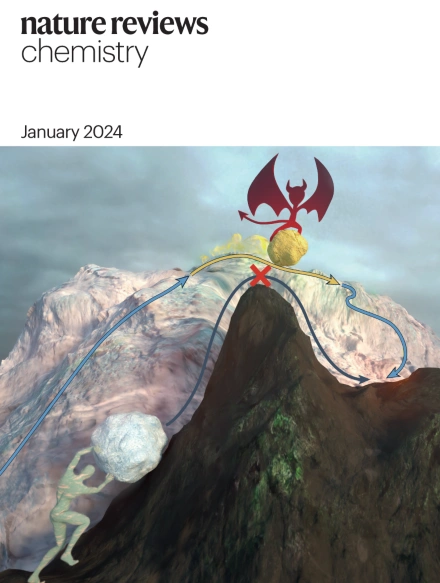分子胶在植物信号网络中的作用和结构
IF 51.7
1区 化学
Q1 CHEMISTRY, MULTIDISCIPLINARY
引用次数: 0
摘要
蛋白质之间的相互作用是所有生命过程的支柱之一。许多信号分子通过促进和稳定这些相互作用而起作用。这些分子“胶”同时与两种蛋白质结合,诱导它们相互作用,否则这将是不太有利或不有利的。重要的是,它们可以用于临床目的,但是,尽管医学取得了进步,植物中丰富的天然分子胶很少被商业利用。这些分子胶可能是植物内源或植物外源的小分子或肽,它们可能参与许多不同的过程,如促进生长或应激反应,为作物保护以及其他应用开辟了新的机会。在这篇综述中,我们详细分析了潜在的结构动机和分子相互作用,根据它们的性质(小配体与肽)和受体类别对作用模式进行了分类。我们讨论了这些化合物的天然代谢物和模拟物,强调了信号通路之间的异同,并将它们与哺乳动物的相关机制进行了比较。本文章由计算机程序翻译,如有差异,请以英文原文为准。


The role and structure of molecular glues in plant signalling networks
Protein–protein interactions are one of the pillars of all life processes. Many signalling molecules work by promoting and stabilizing these interactions. These molecular ‘glues’ bind simultaneously to two proteins inducing their interaction, which would be otherwise less favourable or non-favourable. Importantly, they can be harnessed for a clinical purpose, but, despite advances in medicine, the wealth of natural molecular glues in plants have only rarely been commercially utilized. These molecular glues may be plant-endogenous or plant-exogenous small molecules or peptides, and they may be involved in many different processes, such as growth promotion or stress response, opening new opportunities for crop protection, along with other applications. In this Review, we analyse the underlying structural motives and molecular interactions in detail, classifying the modes of actions based on their nature (small ligands versus peptides) and receptor classes. We discuss both natural metabolites and mimetics of such compounds, highlighting similarities and differences between signalling pathways and comparing them with relevant mechanisms in mammals. In this Review we discuss the fascinating molecular details of the small molecules and peptides promoting plant protein–protein interactions, and their relevance for plant development and environmental responses.
求助全文
通过发布文献求助,成功后即可免费获取论文全文。
去求助
来源期刊

Nature reviews. Chemistry
Chemical Engineering-General Chemical Engineering
CiteScore
52.80
自引率
0.80%
发文量
88
期刊介绍:
Nature Reviews Chemistry is an online-only journal that publishes Reviews, Perspectives, and Comments on various disciplines within chemistry. The Reviews aim to offer balanced and objective analyses of selected topics, providing clear descriptions of relevant scientific literature. The content is designed to be accessible to recent graduates in any chemistry-related discipline while also offering insights for principal investigators and industry-based research scientists. Additionally, Reviews should provide the authors' perspectives on future directions and opinions regarding the major challenges faced by researchers in the field.
 求助内容:
求助内容: 应助结果提醒方式:
应助结果提醒方式:


